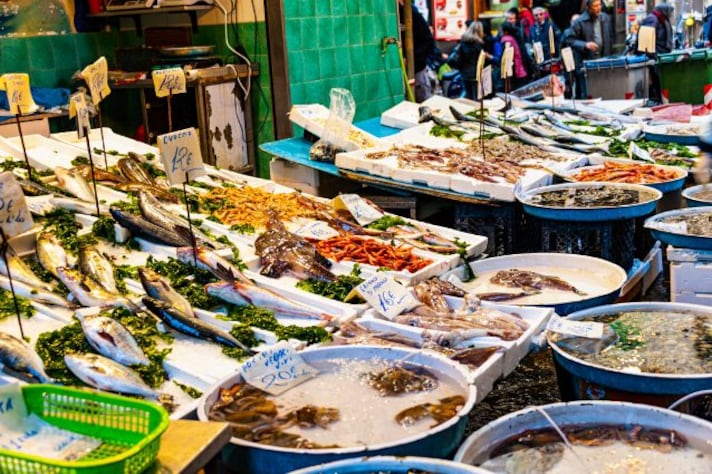Why Are Fish and Seafood So Expensive? Here Are The Reasons Why (And More Affordable Options)
The price of fish and seafood has greatly increased in the past years due to various factors, including seasonality, high demand and global trends of consumptions. Moreover, factors like overfishing and the handling of caught fish can also contribute to increased prices. Affordable options, however, exist: species like tilapia, mackerel and sardines are more accessible to everyone.

Walking through the aisles of a supermarket or browsing the selection at a local fish market, one might be taken aback by the high prices of fish and seafood. Varieties that were once considered everyday staples, like cod, now come with hefty price tags. Why has fish become so expensive? There are several factors at play that influence the price of fish and seafood.
1. The Products' Seasonality
The price of fish and seafood can fluctuate significantly due to seasonality. Many fish species are only available during certain times of the year, making them more expensive when they are out of season. For example, the supply of wild salmon peaks during specific months, leading to higher prices when they are less abundant. Seasonal weather conditions can also impact fishing activities, further affecting supply and prices.
2. The Products' Demand
The cost of fish and seafood can be significantly drive up due to high demand. More people have been incorporating fish into their diets, knowing how beneficial it can be for them. Fishes like tuna and salmon have seen an increased demand on the market, and this has pushed prices to get higher. Additionally, various species of seafood are staple ingredients in many traditional cuisines around the world, and this contributes to the high prices.

3. The Trends of Consumption Around the Globe
The price of fish and seafood is also highly influenced by the consumption trends around the globe. Emerging markets, like China and India, have seen an increased demand of species of fish and seafood, due to a sudden surge in consumption. As a result, this has led to greater competition for available resources, which can strain supplies and drive up prices on an international level, even for local consumers.
4. Environmental and Sustainability Problems
Environmental concerns and sustainability issues are critical factors affecting the price of fish. Overfishing has depleted many fish stocks, leading to stricter regulations and reduced catches. Species like Atlantic cod have seen dramatic declines due to overfishing, making them rarer and more expensive. Additionally, efforts to ensure sustainable fishing practices can increase operational costs for fisheries, which are then passed on to consumers.

5. The Problem With Handling and Transportation
The process of handling and transporting fish from the ocean to the grocery store is complex and costly. Fish is a highly perishable product that requires careful handling, refrigeration, and timely transportation to maintain its quality. These logistical challenges can add to the overall cost. Furthermore, any delays or issues in the supply chain can lead to spoilage, losses, and higher prices to cover these risks.
Fish is Expensive, but Is It More Expensive Than Meat?
When comparing the cost of fish to meat, fish is often more expensive on a per-pound basis. The reasons include the aforementioned factors like seasonality, high demand, and sustainability issues. Meat, on the other hand, typically benefits from more stable and scalable production processes. However, prices can vary widely depending on the type and cut of meat or fish, as well as market conditions.
Is There Any Accessible Fish For Who's on a Budget?
Despite the high costs of many fish varieties, there are still some more accessible options available. Species like tilapia, catfish, and certain types of farmed salmon tend to be more affordable. These fish are often raised in aquaculture settings, which can provide a more consistent and controlled supply compared to wild-caught fish. Additionally, some smaller, less popular fish like mackerel and sardines are not only cheaper but also packed with nutritional benefits.
;Resize,width=767;)

;Resize,width=712;)
;Resize,width=712;)
